
14 minute read
The benefits of remanufacturing
Remanufacturing is a superior option to both non-genuine and OEM new replacement parts; cost, quality and the environment being just the start...
Round and round we go...
The circular economy goes the extra mile by being less harmful to the environment and your wallet but Rob Marshall looks at other benefits that remanufacturing offers
It is good not to be wasteful. While car manufacturers tempt their customers to replace their new car every few years, the inconvenient truth is that keeping an older vehicle running, instead of scrapping it prematurely, is far better for the environment and, very often, owners' wallets. Vast sections of the aftermarket have realised this for decades. Carwood considers that, because the average motorcar is not only increasing in age but also sophistication, often the only viable way to ensure a supply of high-quality spare parts throughout its lifetime is via remanufacturing.
Shaftec, another well-established remanufacturing company, agrees and expounds: "Remanufacturing is the way forward on many levels: it is better for the environment, as it uses less energy and raw materials; it is a more financially efficient solution and is often the only way to keep older vehicles on the road - essential in markets with ageing vehicle parcs."
ZF's remanufacturing component range is also vast and, compared to new parts, its remanufacturing programme saves between 50-90% of raw materials and offers a 90% energy saving. Carwood reveals similar figures in its considerable remanufacturing portfolio, which covers fuel systems to rotating electrics: it says that remanufacturing saves up to 70% of the resources and consumes approximately 85% less energy.
From a consumer viewpoint, Carwood admits that, while there is still a lack of awareness of the potential benefits and the essential differences between used, reconditioned and repaired products, there is a growing acceptance that we cannot afford to keep using and disposing of valuable natural resources.
With increasing pressures to reduce their corporate CO2 emissions, Vehicle Manufacturers (VMs) also realise the advantages that remanufacturing brings, although the financial benefits are not lost on them. Toyota First states that, aside from the environmental advantages, its remanufactured parts offer higher profit margins, costing between 20 and 40% less than a new component.
Distrigo, the multi-brand parts distribution network from Stellantis (formed earlier this year with the merger of PSA Group and FCA), reaffirms that the cost savings can be up to 40%. Its Re New remanufactured parts include brake callipers, DPFs, air conditioning compressors, engines, transmissions, radiators, turbochargers and fuel injection components. The scheme has been expanded recently to include electrical items, such as multimedia units, ECUs and instrument clusters.
A problem of definition
Despite remanufacturing appearing to be a win-win, it has taken considerable time and debate to define. For example, a remanufactured item is clearly different from a used item that has been cleaned, or simply repaired. The overall accepted definition of a remanufactured part is one that fulfils a function, at least equivalent to that of the original part, and is restored from existing core with standardised industrial processes in line with specific technical specifications. It also is given the same warranty as a new part.
While this formal definition is useful, it contains some vagueness. Yet, 'Standardised industrial processes' must differ between component groups: remanufacturing a starter motor is, clearly, a very different proposition to remanufacturing a

Technicians need to be wary of short-cuts that damage the part as it is removed, which makes it unsuitable for remanufacturing. This brake calliper's handbrake bracket looks like it has been struck with a hammer, which has cracked the casting. Sadly, this part is suitable only for scrap and the customer's surcharge will not be refunded.
driveshaft, for example. Even so, it can also mean that one remanufacturer of rotating electrics, for instance, can have different processes in place, compared to a competitor, because technical opinions can differ. Attitudes to core quality can also differ: one remanufacturer may view a damaged part as suitable for remanufacturing, whereas another might consign it to the scrap bin. Shaftec reports that it is very careful about its core evaluation at the beginning of its remanufacturing process, especially as it reduces the tendency of core being rejected at a later stage.
The Remanufacturing Council admits to AT readers that the growing interest in remanufacturing is beginning to require more formal definitions, hence the interest in the standards organisations globally, including the BSI. However, for motor cars, the only remanufacturing sector that possesses a formal British Standard, is that for remanufacturing combustion engines. For more information on this topic, consult our editorial from last year: https://autotechnician.co.uk/ remanufacturing-a-subjective-definition.
OE-quality as a minimum|
Any reputable company you choose must deliver remanufactured parts at least to OE quality, as per the formal definition, and have robust internal procedures in place to deliver the required standards. As such criteria are not revealed by the VMs directly, many companies use ISO accreditation to prove the effectiveness of their internal processes.
Even so, garages are tempted by brand-new low-cost copy parts that may be cheaper than a remanufactured item. It also negates the need to return the old part and pay a surcharge that might not be refunded if the received part is found to be unsuitable for remanufacturing. Yet, the reason why many of these parts are relatively inexpensive is that they do not comply with OE standards and even remanufacturers tend not to wish to work with them.
"While there are new options available more cheaply on the market, in the long term it may not make commercial sense to go down this route" argues Shaftec, which refuses to remanufacture any non-OE quality core that it receives, because: "In terms of quality, these parts do not have the integrity... to offer performance as the vehicle manufacturer intended" As a consequence, the company argues that it cannot guarantee the quality of a remanufactured item, based upon a non-OE-quality part. As an example, it is unknown to which pressures a copied casting is designed to withstand.
Remanufacturing: Going the extra mile
Joe Kripli, President of the Automotive Parts Remanufacturers' Association, is confident about the quality of remanufactured components. He justifies his stance to AT readers, admitting that: "The reason we can say that a Remanufactured Product is better than new is because we understand why it failed in the first place and we improve on that component, thus eliminating the inherent warranty issue: Example, an electronic module fails because it overheats, the diode used during production was rated at 85ºC operating temperature, we replace it with a diode rated at 125ºC and the inherent warranty issue is fixed. You might ask yourself why didn't the OEM think of that? They probably did, but that may have been cost prohibited in their business model."
Autoelectro cites the 130 amp alternator, employed on a variety of 2.7-litre Land Rovers, as an example, which is prone to stator failure. Therefore, the company uses bigger stator windings in its AEK3028 remanufactured replacement, which not only solves the defect but also upgrades the maximum output to a minimum of 150 amps. Carwood adds that a remanufactured component can also incorporate any updates, or improvements, that the original manufacturer made during that part's production run.
While the air suspension specialist, Arnott, supplies many new parts, it also remanufacturers air struts. While it admits that, within its speciality, the scope for enhancing an OE design is less for a remanufactured product than designing a new replacement, it uses superior materials in its remanufacturing process. For example, it replaces flexible rubber bellows with the highest quality Continental ContiTech rubber, to increase service life. To prevent leaks, it also employs longer-lasting seals, and heavier-duty crimping rings.
However, going the extra mile can mean more than just addressing an inherent defect. It could mean simply having a UK-based technical department that responds swiftly to enquiries, be it online, or telephone. It might also be defined by offering a warranty that is more generous than that provided
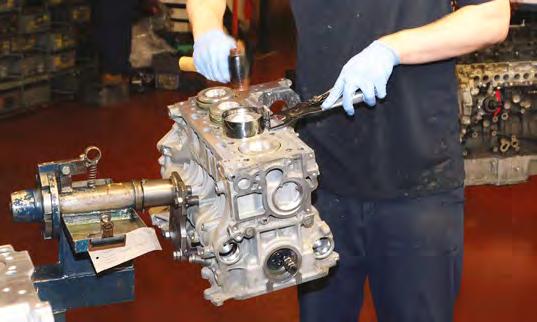
The only formal definition of remanufacturing processes is 'Code of practice for the remanufacture of spark and compression ignition engines' (BS AU 257: 2002). For all other components, you are trusting in the remanufacturing company to get it right.
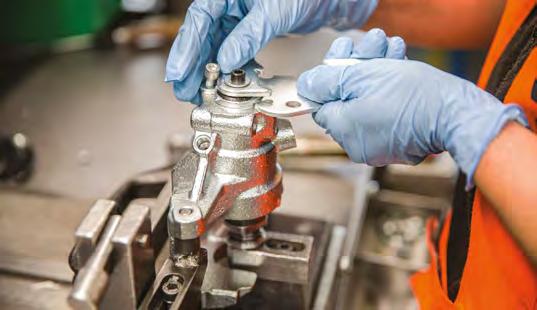
ZF invests millions of Euros in remanufacturing R&D and offers parts from 15 remanufacturing locations around the globe. It reports that quality remanufacturing benefits workshops by negating lengthy troubleshooting, avoiding special tools and simplifying the repair procedure. Price stability also ensures higher customer satisfaction rates.
with a new genuine part; Shaftec's five years-long guarantee on driveshafts and CV joints is a notable example. You may think of it as free delivery, as offered by Distrigo, for example. It can also mean offering the best stock availability and being proactive to introduce new remanufactured parts for newer vehicles, as well as decent cataloguing and being open with sharing technical information. Autoelectro asserts that,
"Our website catalogue contains all kinds of technical information from installation advice and wiring diagrams, plus images that are designed to assist with correct product selection and installation."
Training is also an advantage, especially for niche parts and this is an area that Arnott sees as it offering superior service, as well as the open provision of installation literature and videos.
Extra services can also represent going the extra mile, especially if you are a specialist in classic, or rare exotica. Carwood highlights its electrical rewind service is as an example of this, which facilitates the remanufacturing of any kind of automotive motor and generator. The service can also upgrade classic, vintage, or veteran systems with more modern materials and it cites Nomex as an example, which offers superior thermal endurance compared to the original materials used in older rotating electrics.
Remanufacturing: The future
Carwood reports that remanufacturing is key to every automaker's strategy and will remain so for the long term. Aside from the cost and environmental benefits, it views the growth of alternative powertrains as being a future opportunity for experienced remanufacturers. It cites high-value items for EVs, such as the battery pack and electric drive motors, that will offer significant future growth potential for remanufacturers, despite such vehicles containing fewer components than today's combustion-engined models. Without ready supplies of undamaged core, the remanufacturing industry cannot survive. Therefore, considerable value is attached to the failed part that you remove from the car, so do not do anything to it that renders it fit only for the scrap bin. Arnott advises that, for air struts, this includes the primary components and all intact parts, such as harnesses, plugs, hoses, ball joints, and sensors. Apart from ancillary components being missing, Shaftec advises technicians to avoid poor housekeeping, which contributes to core damage. Over-aggressive use of inappropriate tools risks compromising the core's integrity, increasing the likelihood of the remanufacturer rejecting the part and therefore, not refunding any surcharge.
Such examples of poor removal techniques include damaging threads on brake callipers, or striking them with a hammer and breaking/cracking the casting. Steering racks also suffer from irreparable pinion damage, if removed carelessly. For EPS systems, cutting the wiring looms to facilitate removal can destroy the unit, because replacement cabling can cost hundreds of pounds, which writesoff the economic viability of remanufacturing that component.
Carwood highlights common reasons for core rejection, including damaged fuel injector bodies and electrical components by technicians using "inappropriate methods" to extract them from the cylinder-head. For high-pressure diesel pumps, using incorrect high-pressure extraction tools to remove the unit from the engine is known to damage the housing and driveshaft. ECUs are especially delicate and the technician could damage them beyond repair by, for example, simply dropping it, or using inadequate packing, so the part becomes damaged in transit.
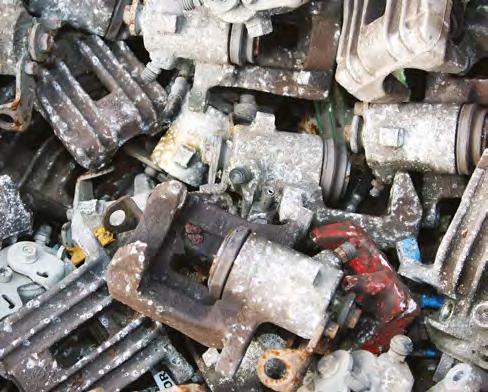
These parts' worth as core is far higher than their scrap value
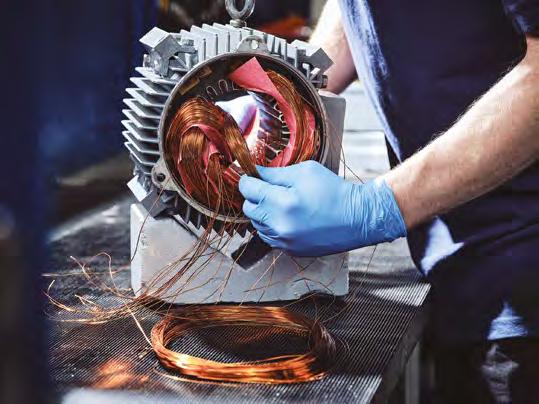
Carwood Rewind's service, based in Yeovil, Somerset, is a fascinating offering. Much of the process is highly skilled and performed by hand. The company reports that, for vintage vehicles, 6v to 12v conversions are the most common upgrade and, naturally, the service is extended to motors used in industrial and agricultural applications, not just automotive. One reason why trusting a well-established remanufacturing company, aside from the quality of remanufacturing, is also the high standards of final testing, which minimises the inconvenience of warranty claims.
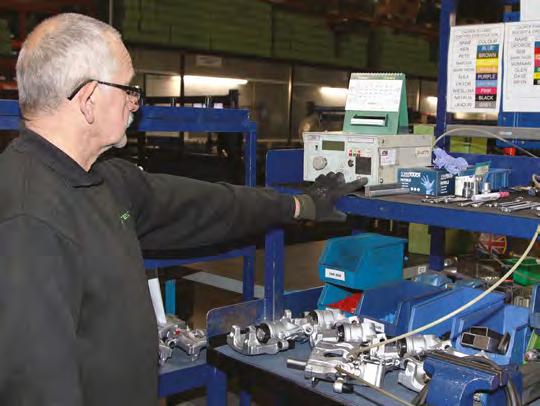
2030, especially if synthetic fuels become mainstream. The Bradford-based rotating electrics specialist anticipates further technology advances for charging and stop-start, as well as hybrid and 48v drive systems. The company reports that it is in an excellent position to accommodate remanufacturing demand and it is stocking these later part numbers in its range already. For Shaftec, it envisages particular growth in Electric Power Steering (EPS) within the next two years. It reassures AT readers that its recent heavy R&D investment is intended to meet future demand for EPS, which it predicts will be "dramatic" over the next two years.

Benefits of Air Suspension Over Coil Suspension
Nowadays, around 5% of all new passenger cars are equipped with factory-fitted air suspension and this number is growing. In the beginning, air suspension was offered for high end models only, but in the last few years has worked its way down to midrange passenger cars as well.
This change has been driven by steadily growing customer demand for safety, stability and, above all, driving comfort. Combined, these three aspects are something that air suspension can provide best.
Spring rate
To understand why air suspension can offer the best combination of safety, stability and driving comfort, you have to dig a bit deeper into suspension technology and the influence of the so-called spring rate on the behavior of the car.
The spring rate is easily defined as the force that is needed to compress a spring. The relation between the spring rate and the vehicle weight defines the tuning of the vehicle – towards comfort or performance, for example. In general, a firm suspension gives more stability but feels rather harsh and uncomfortable, whereas softer suspension gives more comfort, but the stability of the car gets reduced. Conventional coil springs always have to compromise between these two extremes.
The relation between the vehicle weight and spring rate changes when the weight increases. Imagine a car full of passengers and luggage when going on holiday, this extra load will certainly increase the vehicle weight. In this case, an adaptation in the spring rate is necessary to keep the body motions (oscillations) of the vehicle in motion at the same rate. When this happens successfully, a load-independent driving experience is established. In a vehicle with air suspension, the adaptation in the spring rate is provided by the progressive behavior of the air spring and by changing the air pressure inside the air spring. Coil springs do not have the same “flexibility” as an air spring and thus either the comfort or stability would be impaired.
Height level control
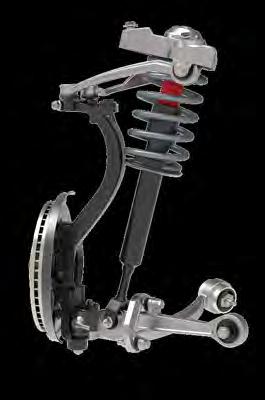
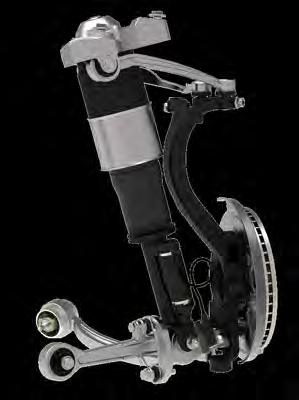
With a conventional coil spring suspension set up the chassis gets closer to the ground in a heavy loaded condition. This shortens the stroke of the shock absorber and the car is more likely to “bottom-out” on rough roads or uneven surfaces (e.g. potholes). Furthermore, the wheel alignment is affected which has a negative effect on tyre wear, road grip and the vehicle might react more heavily on rutted roads (where the road surface is worn or damaged).
An air suspension system is equipped with ride height sensors on the axles that keep the vehicle leveled as well as perform other functions. These level sensors capture the undesired change in the road surface and the system automatically increases the air pressure in the air spring to bring the vehicle back to its original level. The vehicle will no longer bottom out and the tyre wear and road holding are more consistent.
Other advantages
Air suspension systems can also contribute to lower fuel consumption. At highway speeds, the air pressure inside the air spring is reduced, lowering the vehicle body and thus decreasing the drag coefficient on the vehicle and saving fuel.
An inherent benefit of air suspension is that it naturally isolates the passengers from road harshness, resulting in a smooth and comfortable ride. Most car owners describe this as the biggest advantage of driving a vehicle with air suspension.
info@arnotteurope.com











